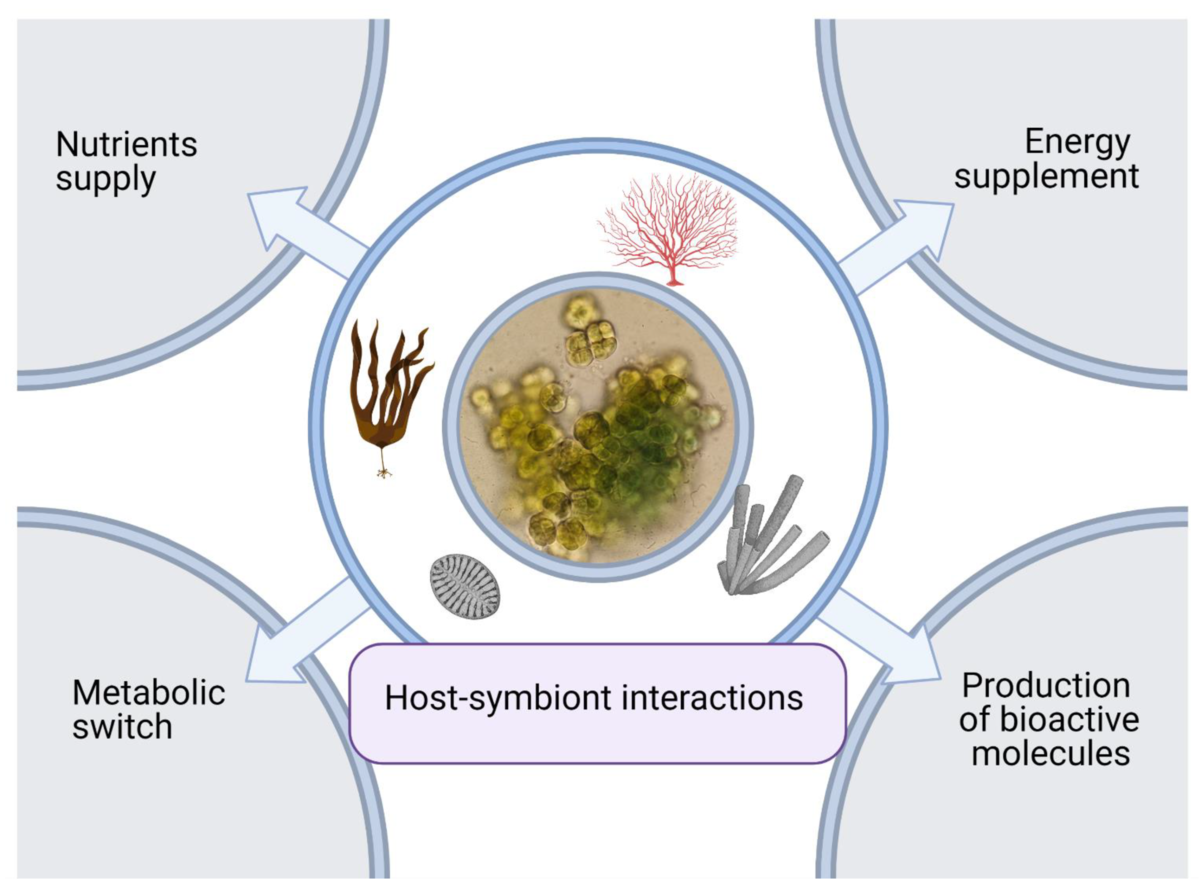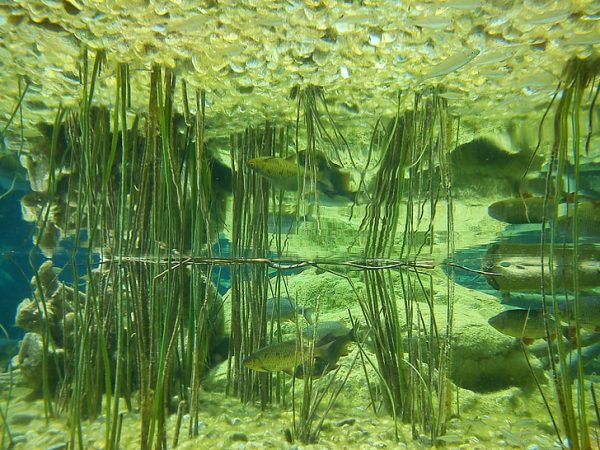Table of Contents
![]()
Introduction
Algal symbiosis, the intricate interplay between algae and other organisms, is a captivating topic in ecological research. These relationships, spanning mutualistic, parasitic, and commensalistic interactions, play a crucial role in shaping ecosystems and understanding the complexities of life on Earth. In this article, we delve into the multifaceted world of algal symbiosis, exploring its types, mechanisms, ecological significance, and relevance to human endeavors.
Types of Algal Symbiosis
- Mutualistic Algal Symbiosisa. Lichen Symbiosis: Lichens, fascinating symbiotic organisms, consist of a fungus and an alga or cyanobacterium. The alga provides photosynthetic capabilities, while the fungus offers protection and a stable environment.b. Coral-Algae Symbiosis: In coral reefs, corals and symbiotic algae called zooxanthellae have a mutualistic bond. The algae photosynthesize, providing corals with nutrients and vibrant colors, while corals offer protection and a habitat.
- Parasitic Algal SymbiosisAlgae can also engage in parasitic relationships, where they exploit the host organism for resources, often causing harm or disease.
- Commensalistic Algal SymbiosisSome algal associations are commensal, with one partner benefiting while the other remains unaffected. These interactions are less explored but are crucial to understanding species coexistence.
Interactions with Other Organisms
A. Plant-Algae Symbiosis
- Mycorrhizal Associations: Mycorrhizal fungi form symbiotic relationships with plant roots and sometimes associate with algae, enhancing nutrient uptake.
- Epiphytic Algae on Plants: Algae can colonize the surfaces of plants, potentially aiding the host through various mechanisms.
B. Animal-Algae Symbiosis
- Endosymbiosis in Protists: Protists like the dinoflagellate symbionts of corals play a vital role in providing nutrients through photosynthesis.
- Algae in Animal Guts: Ruminants and some invertebrates host algal symbionts in their digestive systems, aiding in digestion and nutrient acquisition.
C. Algae-Fungi Symbiosis
- Lichenized Fungi: Lichens are prime examples of algae-fungi partnerships, where both partners contribute to the symbiotic lifestyle.
- Mycorrhizal Associations: Mycorrhizal fungi can form associations with both plants and algae, leading to unique tripartite relationships.
D. Algae-Bacteria Symbiosis
- Nitrogen-Fixing Cyanobacteria: Cyanobacteria residing within plant roots or specialized structures can fix nitrogen, benefiting both partners.
- Algae-Bacteria Biofilms: In aquatic ecosystems, algae and bacteria often form biofilms that play critical roles in nutrient cycling.
Mechanisms of Interaction
Understanding the mechanisms underlying algal symbiosis is essential:
- A. Nutrient Exchange: Algae often provide photosynthetic products (e.g., sugars and oxygen) to their hosts in exchange for protection or access to nutrients.
- B. Protection and Defense: Symbiotic partners may offer physical protection or chemical defenses against predators or environmental stressors.
- C. Photosynthetic Benefits: Algae’s photosynthetic abilities are central to many symbiotic relationships, as they provide a steady source of energy.
- D. Environmental Adaptation: Symbiotic organisms can enhance their tolerance to harsh environmental conditions by sharing resources and protective mechanisms.
Ecological Significance
- A. Ecosystem Services: Algal symbiosis plays a pivotal role in nutrient cycling, habitat provision, and stabilizing ecosystems.
- B. Impact on Biodiversity: The intricate web of algal symbiosis contributes to the diversity and resilience of ecosystems.
- C. Climate Change Mitigation: Coral-algae symbiosis, for example, is vital for the survival of coral reefs, which act as carbon sinks and protect coastlines.
Human Relevance
- A. Biotechnological Applications: Studying algal symbiosis can lead to innovations in agriculture, bioremediation, and sustainable energy production.
- B. Pharmaceutical Potential: Algae and their symbiotic partners may hold the key to discovering novel pharmaceutical compounds.
- C. Economic Implications: Industries like aquaculture and agriculture benefit from understanding and harnessing algal symbiosis for improved production.
Current Research and Challenges
- A. Emerging Discoveries: Ongoing research reveals new facets of algal symbiosis, shedding light on previously unexplored interactions.
- B. Unresolved Questions: Many mysteries surround the intricacies of algal symbiosis, presenting exciting avenues for future research.
- C. Conservation and Preservation Efforts: Understanding these relationships is crucial for conserving ecosystems and species dependent on algal symbiosis.
Conclusion
In conclusion, algal symbiosis exemplifies the astonishing complexity and interconnectedness of life on our planet. From mutualistic bonds to parasitic exploits, these relationships shape ecosystems, influence biodiversity, and hold immense potential for human endeavors. As research continues, our understanding of algal symbiosis will undoubtedly expand, offering solutions to ecological challenges and unlocking new frontiers in science.

